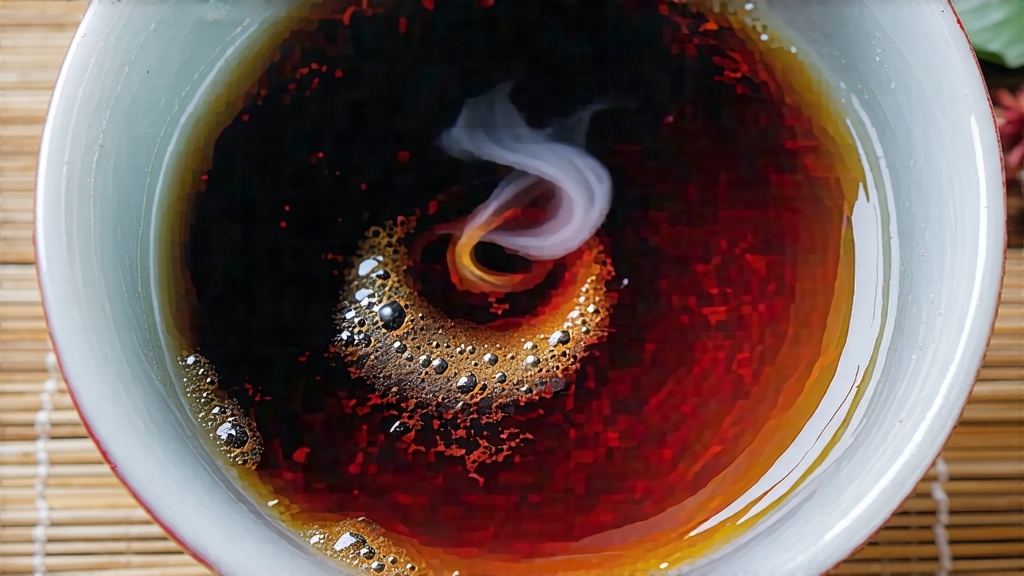
If green tea is China’s liquid jade and pu-erh its earthy antique, then Phoenix Dancong—Fenghuang Dancong in Mandarin—occupies the perfumed corridor between poetry and memory. Grown on the steep, granite spines of Phoenix Mountain in northern Guangdong, this oolong is less a single tea than a fractal family of aromatic micro-cultivars, each leaf trained to imitate the scent of flowers, fruits, even spices. One sip can suggest ginger blossom, another ripe mango, a third the elusive note of winter orchid. To understand Dancong is to step into a centuries-old dialogue between geology, genealogy and human artistry.
Historical roots
Local chronicles credit the Song Dynasty (960-1279) for elevating wild tea trees into garden culture. When the imperial family fled south, court artisans settled among the She ethnic villages and began selecting bushes whose leaves naturally echoed the fragrance of nearby flowers. By the Ming era, tribute lots were carried by sedan chair to Beijing, the leaves wrapped in banana leaf and bamboo bark to preserve their perfume. The name “Dancong” literally means “single bush,” reflecting the original practice of harvesting each old tree separately so that its unique aromatic gene code remained unblended. Today the term is looser, yet the cult of individuality persists: every prestigious village keeps a “mother tree” whose cuttings are grafted for new gardens, botanic royalty traced in the manner of European vine clones.
Micro-terroir on Phoenix Mountain
Phoenix Mountain rises abruptly from the subtropical lowlands, its peaks brushing 1,400 m and trapping maritime clouds that shroud the slopes in shifting mist. The soil is a coarse, mineral-rich laterite laced with quartz; drainage is so sharp that roots plunge two metres in search of water, concentrating flavour. Temperature swings of 15 °C between day and night slow leaf growth, thickening cell walls and stacking aromatic precursors. Within a 20 km radius, micro-valleys named for their dominant aroma—Honey Orchid, Almond Fragrance, Ginger Flower—harbour bushes that have adapted to slightly different altitudes, sun angles and neighbouring flora. The result is a living library of scents, a botanical parliament in which each cultivar argues for its own version of mountain soul.
Cultivar lexicon
More than eighty aromatic profiles have been catalogued, but ten enjoy celebrity status. Song Zhong, the patriarch, is said to descend from 700-year-old trees planted during the Southern Song; it delivers a lychee-litchi top note above warm honey. Mi Lan Xiang (Honey Orchid) layers lilac sweetness onto roasted stone-fruit. Huang Zhi Xiang (Orange Blossom) carries a citrus-peel brightness balanced by cream. Yu Lan Xiang (Magnolia) is plush and powdery, while Zhi Lan Xiang (Orchid) remains airy and elusive. Each name is both promise and challenge: the tea must persuade the drinker that the cup contains a living flower.
Harvest calendar
Spring plucking begins at the end of March when two leaves and a bud still wear a faint down. Work is done by hand on 45-degree slopes so steep that pickers tie themselves to bamboo stakes. Only 3 kg of fresh leaf can be carried in one wicker basket, translating into 600 g of finished tea. A second, lighter harvest follows in late September when cooler nights coax a more piercing aroma; connoisseurs debate whether autumn Dancong offers greater complexity or merely a thinner body. Winter dormancy is crucial: bushes must rest under frost-free fog so that spring’s first enzymes awaken with fragrant intent.
Crafting the fragrance: eight stages
- Withering under mountain sun for 20 minutes starts enzymatic oxidation and drives off grassy volatiles.
- Indoor withering on bamboo racks follows, where leaves lose 15 % moisture while absorbing floral room notes.
- Hand tossing in round bamboo trays bruises leaf edges, releasing catechins and triggering partial oxidation at 30–35 %. This is the moment when Dancong’s perfume is born; master sniffers plunge their faces into the warm leaves every 15 minutes, chasing the exact transition from grass to fruit.
- Green killing (shaqing) on a 200 °C drum halts oxidation within 90 seconds, locking colour at jade-green centres with russet margins.
- Rolling under linen cloth breaks cell walls, twisting leaves into the signature strip shape while coiling aromatic oils inward.
- First drying at